| Title | A comparison of regression techniques for a two-dimensional sensorimotor rhythm-based brain-computer interface. |
| Publication Type | Journal Article |
| Year of Publication | 2010 |
| Authors | Fruitet, J, McFarland, DJ, Wolpaw, J |
| Journal | Journal of neural engineering |
| Volume | 7 |
| Pagination | 16003 |
| Date Published | 02/2010 |
| ISSN | 1741-2552 |
| Keywords | Young Adult |
| Abstract | People can learn to control electroencephalogram (EEG) features consisting of sensorimotor-rhythm amplitudes and use this control to move a cursor in one, two or three dimensions to a target on a video screen. This study evaluated several possible alternative models for translating these EEG features into two-dimensional cursor movement by building an offline simulation using data collected during online performance. In offline comparisons, support-vector regression (SVM) with a radial basis kernel produced somewhat better performance than simple multiple regression, the LASSO or a linear SVM. These results indicate that proper choice of a translation algorithm is an important factor in optimizing brain-computer interface (BCI) performance, and provide new insight into algorithm choice for multidimensional movement control. |
| URL | http://www.ncbi.nlm.nih.gov/pubmed/20075503 |
| DOI | 10.1088/1741-2560/7/1/016003 |

